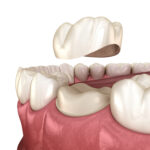
Heel Spur and Plantar Fasciitis are two common conditions that affect the foot. Both can cause pain in the heel or arch of the foot. However, while these conditions may have similar symptoms, they are actually quite different. In this article, we will compare and contrast heel spurs and plantar fasciitis, so you can better understand the difference between these two conditions.
What is a Heel Spur?
A heel spur is a bony growth that forms on the heel bone. It is usually the result of repetitive trauma to the heel, such as from running or jumping. Heel spurs can be painful, but not all people with heel spurs have pain. They are most often seen in people who run or jog on hard surfaces, such as concrete. They can also be seen in people standing for long periods on hard surfaces. In addition, it can be seen in people with arthritis or other conditions that affect the heel.
Heel spurs are usually diagnosed with an X-ray. Treatment options include rest, ice, and over-the-counter pain medications. In some cases, physical therapy or custom orthotic devices may be recommended, but surgery is rarely necessary. In addition, it would be best in your interest to check out what a podiatrist is and what they can do for you to avoid heel spurs or any other foot-related problems in the future.
What is Plantar Fasciitis?
Plantar fasciitis is an inflammation of the plantar fascia, the tough connective tissue that runs along the bottom of your foot from your heel to your toes. It is a common cause of heel pain and can be very painful. Plantar fasciitis is most often seen in middle-aged or older people and is more common in women than men. Several things can contribute to plantar fasciitis, including being overweight, having high arches or flat feet, wearing shoes that don’t support your feet properly, or spending a lot of time on your feet.
If you have plantar fasciitis, you may experience pain in your heel or arch when you first get out of bed in the morning or after standing or sitting for a long period of time. The pain may go away after you walk around for a bit, but it may come back later in the day. Treatment for plantar fasciitis typically includes a combination of rest, ice, and stretching exercises. In some cases, it is best to visit a doctor for plantar fasciitis treatment in Marietta to ensure that you are doing everything possible to avoid further injury.
Conclusion
Now you know the difference between heel spur and plantar fasciitis. If you have either condition, you must see a doctor or podiatrist to get the proper diagnosis and treatment. Both conditions can become worse and lead to other complications if left untreated.




